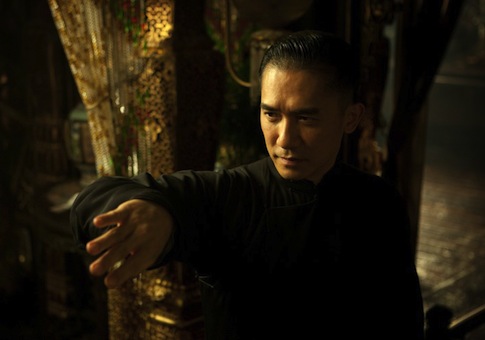Wong Kar Wai’s latest film, The Grandmaster, is by turns elegant and frustrating, beautiful and hard to track, sumptuous and spartan.
The Grandmaster chronicles the journey of Ip Man (Tony Leung), a Kung Fu expert from the south of China. Following the retirement of northern China’s undisputed master of martial arts, Ip is chosen as the greatest champion of this style of Kung Fu. Entranced by Gong Er (Ziyi Zhang), the daughter of the retired northerner, Ip plans to travel north and learn her style of Kung Fu when war between China and Japan breaks out in 1937.
After refusing to betray his homeland to the invading Japanese, Ip flees to Hong Kong. There he instructs students in his homeland’s unique brand of Kung Fu, loses his family when the border to China is closed, reconnects with Gong Er, and becomes one of the greatest masters of Kung Fu in history. Indeed, he was Bruce Lee’s master before Lee came to the United States.
Meanwhile, a secondary plot tracking Gong Er’s quest for revenge against a man who betrayed her father and the Chinese homeland accounts for a large portion of the film’s third act. While this sideshow culminates in a rousing battle on a train platform as an engine goes roaring by, it feels tacked on, almost as if it were the ending of an entirely different movie.
The plot, such as it is, is less important to the proceedings than the elevation of Kung Fu as not just a fighting style, but a way of life. The characters speak not in dialogue but aphorisms—"No arrow can return to its bow" is a typical line—in between displaying their physical mastery over each other on the fighting floor.
The film’s fights are the key selling point. Those who are interested in pure ballet—the fluid, wired fights of Crouching Tiger, Hidden Dragon or The Matrix—are likely to come away disappointed. Though coordinated by Woo-ping Yuen, the master choreographer behind those films and the Kill Bill series, among many others, the battles are shot and edited in a very different manner.
Rather than pulling the camera back and watching the fight unfold as a dance, Wong will start with a middle distance shot, linger on the action for a second or two, and then cut to an extreme close up of a foot or a fist or an inanimate object. On the close-up the camera slows and we see the result of the previous, full-speed impact on whatever our new focus is: a foot slides backwards as a body absorbs a blow, a doorframe shudders and its joints loosen as a fist slams into it.
The effect is to portray martial arts less as a series of flamenco steps and more as a physics problem. Action and reaction, push and pull, weight and counter: It’s Newton brought to life.
It is a different approach, one that subverts expectations in an occasionally pleasing way, but also never entirely works. The fights feel disjointed and after a while become hard to follow. Momentum fails to build as we have a hard time grasping the battle as a whole.
Yet Wong Kar Wai’s visuals are, unsurprisingly, stunning. Whether we are inside the finest brothel in southern China or tracking a funeral march in the snow-swept plains of the north, the eye is pleased.
The Grandmaster will likely disappoint those expecting a coherent narrative feature. Those who go in expecting something slightly more impressionistic, however, will be better prepared to enjoy it.
